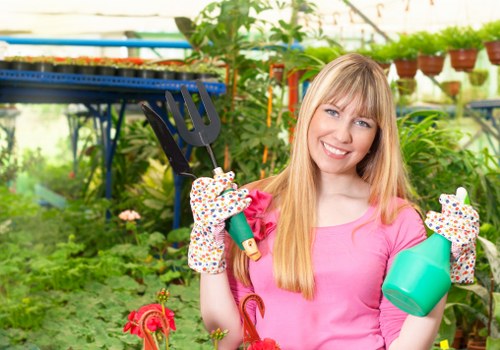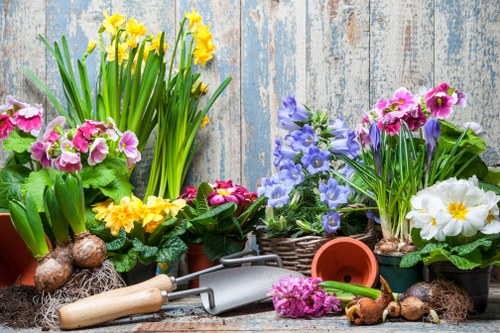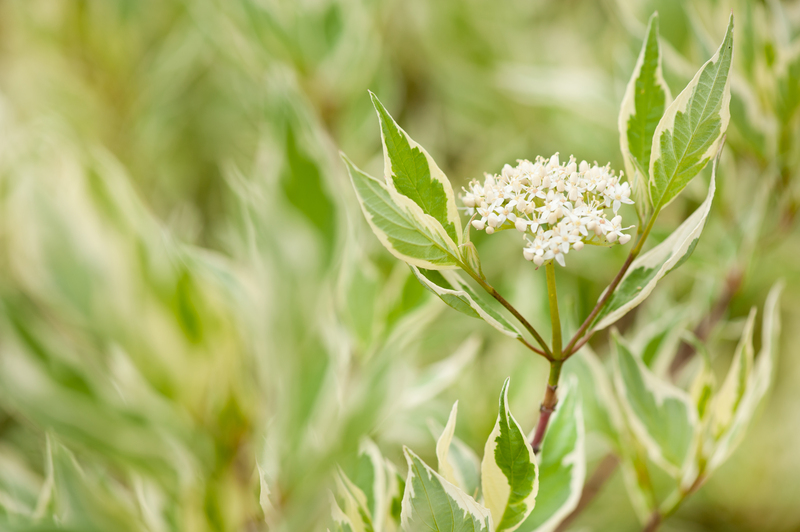Modern Garden Maintenance: Techniques for a Flourishing Landscape

In the realm of modern garden maintenance, homeowners and gardening enthusiasts alike strive to achieve a harmonious balance between aesthetics and functionality. Contemporary approaches emphasize sustainability, efficiency, and innovative design to ensure that gardens not only look stunning but also thrive with minimal effort. Modern garden maintenance involves a variety of practices that cater to the evolving needs of today’s lush outdoor spaces.
One of the key aspects of modern garden maintenance is the integration of technology. Smart irrigation systems, for example, allow gardeners to automate watering schedules based on weather conditions, soil moisture levels, and plant requirements. This not only conserves water but also ensures that plants receive the optimal amount of hydration, promoting healthier growth and reducing manual labor.
Additionally, modern garden maintenance often incorporates eco-friendly practices such as composting and the use of organic fertilizers. By recycling garden waste and enriching the soil naturally, gardeners can maintain fertile ground without relying on chemical inputs. This approach not only benefits the environment but also enhances the overall vitality of the garden.
Another essential component of modern garden maintenance is the selection of plant varieties that are both aesthetically pleasing and resilient. Native plants, drought-resistant species, and low-maintenance perennials are popular choices as they require less care and are better adapted to the local climate. Incorporating a diverse range of plants also attracts beneficial pollinators and promotes biodiversity within the garden ecosystem.
Pruning and trimming are critical tasks in modern garden maintenance, ensuring that plants maintain their desired shape and size while preventing diseases and overgrowth. Utilizing sharp, high-quality tools and adhering to proper pruning techniques can significantly improve plant health and appearance. Regular maintenance not only keeps the garden looking organized but also fosters robust plant development.
Pest management has also evolved in the context of modern garden maintenance. Integrated Pest Management (IPM) strategies prioritize the use of natural predators, barriers, and organic treatments over chemical pesticides. By monitoring pest populations and implementing targeted interventions, gardeners can effectively control infestations while minimizing harm to beneficial insects and the broader environment.

Modern garden design often emphasizes the use of sustainable materials and innovative landscaping techniques. For instance, rain gardens and xeriscaping are popular methods that reduce water usage and manage stormwater runoff effectively. Incorporating hardscaping elements such as stone pathways, pergolas, and raised beds can add structure and visual interest to a garden while supporting sustainable practices.
Irrigation technology plays a pivotal role in modern garden maintenance. Drip irrigation systems deliver water directly to the plant roots, minimizing evaporation and runoff. These systems can be programmed to adjust watering times based on real-time weather data, ensuring that plants receive precise hydration without waste.
Lighting is another aspect where modern advancements have made significant impacts. Solar-powered garden lights and LED fixtures provide energy-efficient illumination, enhancing the garden’s beauty and usability during evening hours. Thoughtfully placed lighting can highlight key features, create ambiance, and improve safety without contributing to energy consumption.

Seasonal maintenance is integral to modern garden maintenance. Each season brings unique challenges and opportunities for garden care. In spring, tasks such as soil preparation, planting new flora, and mulching are essential for setting the stage for a productive growing season. During the summer, regular watering, shading, and pest control help sustain plant health under intense sunlight and heat.
Autumn requires gardeners to focus on clearing fallen leaves, preparing plants for winter, and planning for the next growing season. Proper seasonal maintenance ensures that the garden remains resilient against weather extremes and continues to flourish year after year.
Winter maintenance involves protecting plants from frost, pruning dormant trees and shrubs, and maintaining garden structures. By addressing the specific needs of each season, modern garden maintenance ensures that gardens remain vibrant and healthy throughout the year.

One of the trends in modern garden maintenance is the emphasis on minimalism and clean lines. This design philosophy focuses on simplicity, reducing clutter, and creating serene, uncluttered spaces. Minimalistic gardens often feature symmetrical layouts, monochromatic color schemes, and carefully selected plant varieties that complement the overall design.
Furthermore, the use of technology in modern garden maintenance extends to garden management apps and software. These tools help gardeners plan plant layouts, track maintenance schedules, and monitor garden health metrics. By leveraging digital solutions, gardeners can maintain organized and well-managed outdoor spaces with greater ease.
Community gardens and urban green spaces also benefit from modern garden maintenance practices. These shared environments require efficient maintenance strategies to accommodate multiple users and maximize limited space. Sustainable practices and innovative design are crucial for ensuring that urban gardens remain productive and accessible to all community members.

In conclusion, modern garden maintenance is a multifaceted approach that combines sustainability, technology, and thoughtful design to create and maintain beautiful, thriving gardens. By adopting contemporary techniques and practices, gardeners can enjoy lush, resilient landscapes that enhance both their living spaces and the environment.
